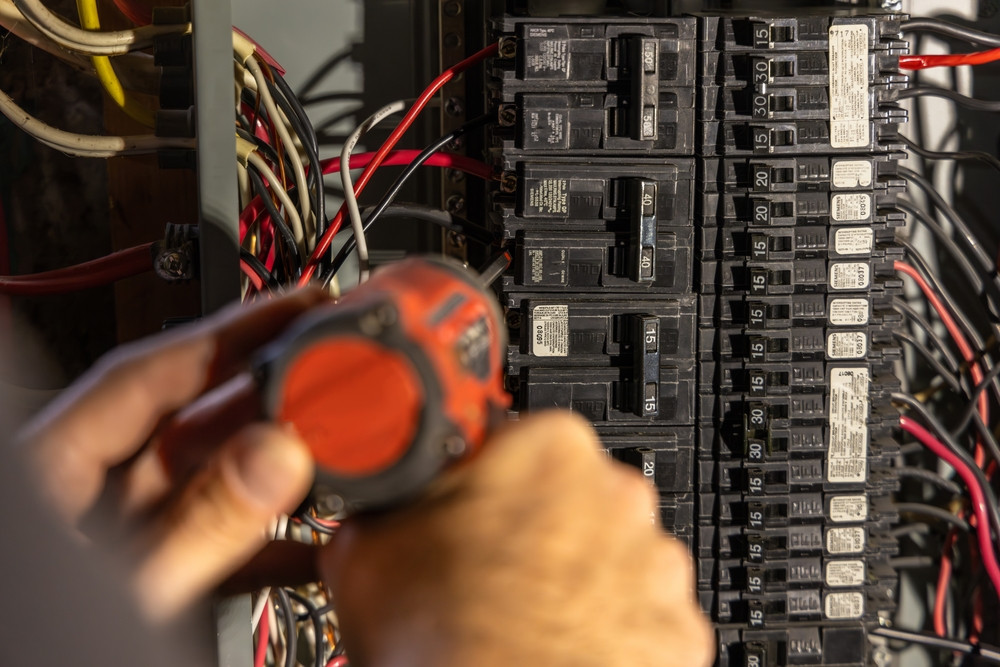Running a commercial or industrial facility smoothly and reliably depends on having a solid electrical system. Think of the electrical panel, or distribution board, as the building’s central command center.
It's what safely and efficiently directs power everywhere. But as technology advances and operational needs grow, an electrical panel that is insufficient in terms of size or age can result in a major headache or an outright liability. That means that an upgrade isn't simply a good idea, but is essential for safety, efficiency, and futureproofing.
How To Tell If It's Time For An Upgrade
When is the right time to perform an electrical upgrade? The decision involves several key factors:
- How does the current system measure up against the facility’s current power needs?
- Is the current system up to code and regulations?
- Is the current system sufficient for the facility’s future needs?
Regular addition of new equipment, such as advanced IT setups, high-efficiency HVAC, electric vehicle (EV) chargers, or complex automation, is very common for modern businesses, though decades-old electrical panels simply weren't designed to accommodate today's electrical demands.
An outdated system can, at best, result in wasted energy, or worse, in serious safety hazards. For that reason, qualified electrical engineers often conduct load studies and growth forecasts that precisely measure current usage and predict future needs, then use that data to determine if an upgrade is necessary.
Such evaluations are particularly important if significant changes, such as HVAC expansion or additional EV charging stations, as well as more sophisticated planned automation projects.
But proactive planning isn't usually necessary to clearly see signs of an undersized panel in need of a timely upgrade. One of the classic symptoms is frequent circuit breaker trips.
This is a telling sign that the system is regularly trying to utilize more power than it can (safely) handle. Other notable concerns include flickering lights, unexplained power fluctuations, concerning buzzing sounds from the panel, or it always being warm to the touch. These issues aren't inconveniences, but indicators of a higher risk of electrical problems.
Persistent voltage drop (voltage not staying at preferred levels under load) can hurt equipment performance and shorten its life.
Keeping up with electrical codes and safety standards isn't optional for facility managers. The National Electrical Code (NEC) is regularly updated with new requirements, which local authorities adopt and enforce.
Old panels aren’t likely to meet the latest NEC standards, potentially leading to fines, forced shutdowns, and potential legal concerns.
For a system to be compliant, features such as protection against short circuits and fault currents, the correct Short-Circuit Current Rating (SCCR), clear arc-flash labels and (where required) an arc-flash hazard analysis to establish boundaries and PPE levels, plus selective coordination so only the affected overcurrent devices trip rather than upstream feeders, are necessary to prevent widespread electrical disruptions.
Regular inspections are vital for spotting outdated wiring, overloaded panels, and improper grounding that don't meet NEC standards. We help facilities evaluate these risks, document findings, and design upgrade paths aligned with NEC and local requirements.
Smart Upgrading Options And Solutions
The size of the electrical panel, along with the energy demands expected from it, is the driving factor in determining which panel type the facility needs to upgrade to. The type of panel that a facility should upgrade to generally depends on a few factors.
The most prominent is the size of the facility and its current energy demands. Smaller facilities require less energy, which makes wall-mounted panelboards their best option. Floor-mounted switchboards, which can handle current flows up to 5,000 A, are a better fit for larger industrial or commercial spaces.
Switchgear, the option with the highest capacity, is designed for industrial-scale demands, power plants, and critical infrastructure.
Updating core electrical equipment is one thing, but many upgrades also include main service upsizing and an increase in energy delivered to a site, which is then distributed to support the facility’s overall power demand.
That may call for upgrades to the meter base or service mast, as well as conductors from the utility. In some cases, transformer and feeder updates are also necessary to ensure that the entire power delivery chain can support the increased electrical load safely and efficiently.
Another key component of modern electrical systems is metering and monitoring infrastructure, which yields invaluable insights for energy-demand management that facility managers can use to analyze current electrical usage, pinpoint areas of inefficiency, and lower utility costs.
Engineering The Upgrade
A successful electrical panel upgrade is a task that requires thorough planning and careful execution. It is a process that involves multiple key stages:
- Assessment and planning: Engage a licensed electrical engineer to thoroughly evaluate the current electrical system, identifying its capacity and any shortcomings. Their assessment should define what the facility needs now (and in the future) and produce a detailed plan addressing power requirements and code compliance.
- Coordinating utilities: Work with the local utility provider to confirm approval and the capacity to accommodate the increased power supply.
- Acquiring permits: Obtain all required approvals from local authorities to keep the facility compliant with building and electrical codes, including OSHA rules and NFPA 70E.
- Design: Electrical engineers develop the new panel layout and, considering the facility’s specific needs and safety criteria, identify the required components.
- Outage planning: Because outages are necessary yet disruptive, schedule work for off-peak hours or weekends and ensure temporary backup power sources (generators) are available.
- Installation: Experienced commercial electricians perform the upgrade, ensuring correct wiring, clear panel labeling, and documentation for inspections and future maintenance.
- Testing and commissioning: Inspections and functional tests verify compliance and performance before the system is placed into full operation.
- Documentation: The final phase includes as-built drawings and an updated single-line diagram to support maintenance and safety.
Benefits Of An Electrical Panel Upgrade
By installing modern panels, facilities gain safety features like AFCIs and GFCIs, which reduce the risk of shock and electrical fire, along with improved arc-flash labeling and studies that lower incident energy exposure and overall risk.
As the new panels can handle higher electrical capacities, there will be fewer power interruptions and a more consistent power supply. This will help the facility achieve greater efficiency and productivity.
With electrical demands from new equipment like HVAC expansion, EV chargers, and other technological advancements, the upgraded system will be able to support the additional workload.
The power in upgraded systems is also distributed more effectively, nearly eliminating issues like voltage drops and flickering lights.
The ability to monitor and measure energy usage with metering capabilities that offer invaluable insights and analysis of energy management helps to highlight areas where further energy gains can be made.
This not only reduces energy costs; it also extends equipment life, reduces unplanned outages, and supports long-term ROI through lower maintenance and improved reliability, while supporting asset value.
MTA Electrical Engineering
If you operate in California or the West Coast and are seeing nuisance trips, heat, voltage drop, or planned load growth (HVAC, EV charging, automation), engage MTA Electrical Engineering for power system studies, electrical system design, and power system testing.
Our services include arc-flash hazard analysis, electrical drawings, coordination studies, power system analysis, commissioning, and short-circuit evaluation to improve safety, reliability, and future capacity. Contact us today to schedule a site visit.

